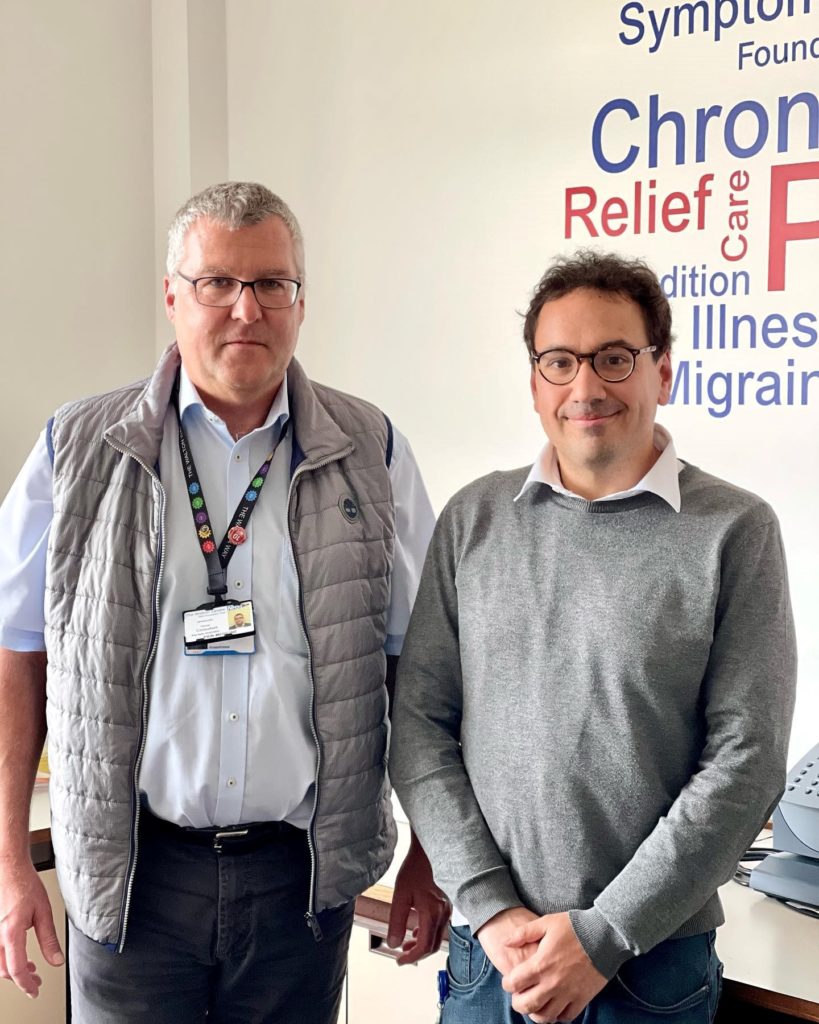by Gianfranco De Stefano, Rome, Italy

The EAN Research Fellowship Programme allowed me to spend an eight-month period as a Research Fellow at the Pain Research Institute, which is part of the University of Liverpool and funded by the Pain Relief Foundation. The Institute is closely associated with the department of Pain Medicine at the Walton Centre for Neurology and Neurosurgery NHS Foundation Trust. I worked under the supervision of Dr Bernhard Frank (pictured, left), Consultant in Pain Medicine, and part of the tertiary joint facial clinic together with Mr O’Neill, Consultant Oral Surgeon and Miss Bhargava, Consultant Neurosurgeon.
The EAN Research Fellowship Programme allowed me to spend an eight-month period as a Research Fellow at the Pain Research Institute, which is part of the University of Liverpool and funded by the Pain Relief Foundation. The Institute is closely associated with the department of Pain Medicine at the Walton Centre for Neurology and Neurosurgery NHS Foundation Trust. I worked under the supervision of Dr Bernhard Frank, Consultant in Pain Medicine, and part of the tertiary joint facial clinic together with Mr O’Neill, Consultant Oral Surgeon and Miss Bhargava, Consultant Neurosurgeon.
My research project was focused on trigeminal neuralgia, and its aim was to use MRI and quantitative sensory testing to distinguish different phenotypes of the disease, which may be representative of different pathophysiological mechanisms and thus respond unevenly to current therapies. Preliminary results of this research were presented at the EAN Annual Congress 2022 and at the European Pain Federation EFIC Congress 2022.
The actual starting date of the fellowship was slightly postponed due to the COVID pandemic, but beside this, the overall impact of the pandemic on the research was minimal. The EAN was greatly helpful and assisted me through every stage of the set-up of the fellowship. The Pain Research Institute is renowned for its multidisciplinary expertise in the field of pain research, and I had the opportunity to meet many scientists working on different aspects of this topic. Moreover, I was able to spend a couple of days at the nearby University of Manchester, where I met Dr Maryam Ferdousi, who trained me in confocal corneal microscopy, an innovative technique for investigating trigeminal sensory innervation of the cornea, which has a promising application in the field of facial pain. Additionally, I took advantage of my stay at the Walton Centre, one of the largest neurological hospitals in the UK, to get more clinical expertise, and I attended many clinics in pain medicine, headache, general neurology, neuromuscular neurology, and clinical neurophysiology. I regularly attended the Grand Rounds, a weekly presentation made by the local doctors-in-raining on the most challenging clinical cases they have encountered, and the Lunchtime Lectures, a weekly talk given by an expert about a hot topic in neurology.
In conclusion, I learned more than a lesson in Liverpool that will stay with me for a long time.











